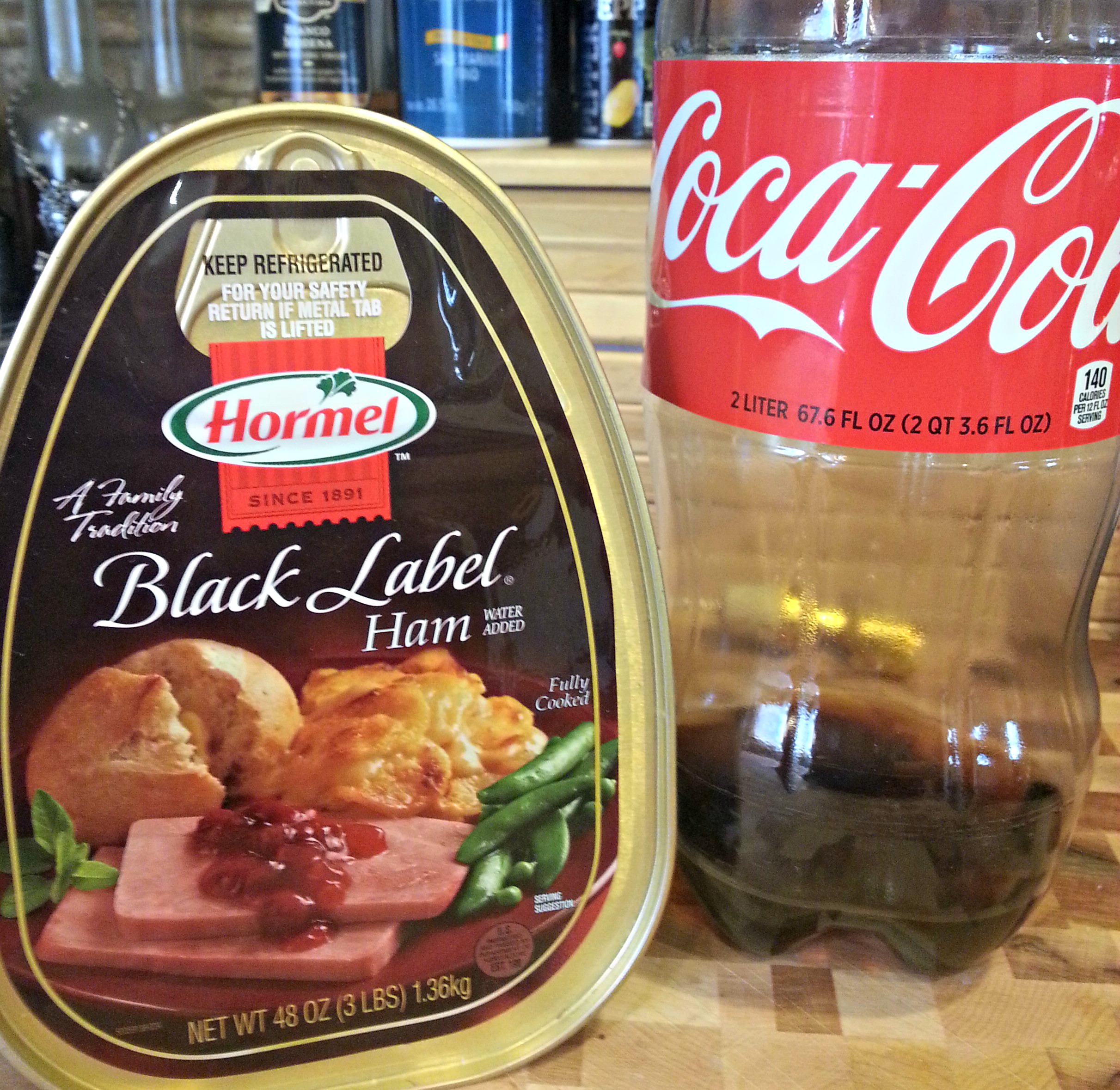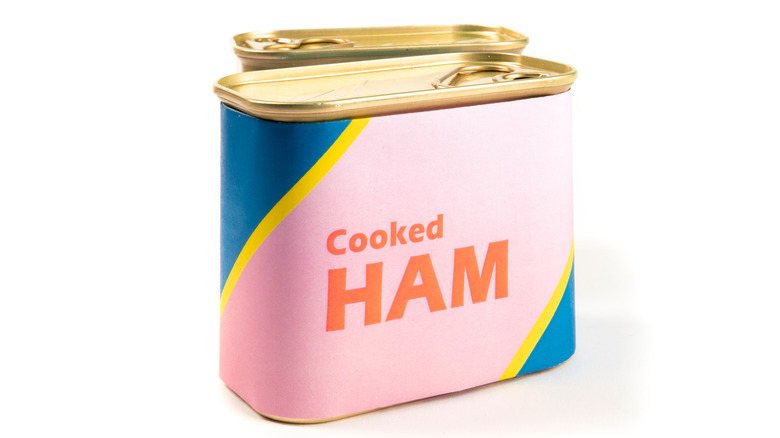There arent many foods quite as quirky as canned ham. Preserved meat that is high in protein is the last thing most of us would pick up at the store these days. It’s old-fashioned and, to be honest, pretty bland. The hard, pale pink outside isn’t very Instagrammable and makes me think of the jelly-filled, mostly homemade drinks from the 1950s. But canned ham has history, and clearly it has staying power.
In all of its many forms—from a clove-studded main dish to a retro, ready-made side dish to a tasty sandwich topping, and so on—canned ham has stood the test of time and the jokes that have been made about it. It lives quietly in the back of our pantries and in the background of our culinary culture. So, whether you want to try it or not, we found out everything you need to know about this meat. This is the untold truth of canned ham.
For generations of Americans, keeping a few cans of pre-cooked ham in the pantry was standard practice. Brands like Spam, Prem and DAK Ham offered a versatile, affordable meat option with an incredibly long shelf life. But over the decades, canned ham slowly faded from popularity. So what happened to this former kitchen staple?
A Handy Protein is Born
The origins of commercially produced canned ham can be traced back to 1926, when Hormel launched the first major brand – Hormel Flavor-Sealed Ham. The convenience and practicality of canned ham struck a chord with consumers.
Its popularity exploded in 1937 with the debut of Spam – a spiced, pressed ham product that became a protein lifeline during the Great Depression. Affordable canned hams were also valued during wartime and the postwar years when fresh meat was less accessible.
By the 1950s, brands like Spam, Prem, and DAK Ham earned a place in millions of American pantries and lunches. Practical home cooks appreciated canned ham’s long shelf life, versatility, and budget-friendly price
The Golden Age of Canned Ham
So what made canned ham an unbeatable pantry staple for so many years? There were several key factors driving its popularity:
-
Convenience – Fully cooked and ready to eat straight from the can, no refrigeration required. This made canned ham ideal for quick meals and outdoor adventures.
-
Affordability – Canned ham reigned as one of the cheapest sources of meat per pound. Brands like Spam were especially budget-friendly.
-
Shelf Life – Unopened cans could last a staggering 2-5 years in the pantry. Canned ham’s long shelf life gave it a major advantage.
-
Portability – Durable tin cans made ham easy to pack in lunches and ship overseas to soldiers. Ideal for camping too.
-
Versatility – Creative cooks incorporated canned ham into breakfasts, sandwiches, casseroles, and more. It worked well in many recipes.
With these practical benefits, canned ham became a ubiquitous staple by mid-century. But changing times would eventually dethrone it.
The Decline of Canned Ham
Though still readily available, canned ham’s popularity peaked decades ago. When did America’s love affair with canned pork start to cool? A few cultural shifts stacked the odds against it:
-
Health Concerns – Starting in the 1960s-70s, canned ham’s high sodium levels became a concern. Later, consumers took more issue with the preservatives, fat, and nitrites.
-
Refrigeration – As more households got refrigerators, the need for canned meats decreased. Fresh/frozen ham became more accessible.
-
Changing Tastes – By the 1980s, preferences shifted away from processed foods. Shoppers sought out fresher, less artificial products.
-
New Competition – Alternative proteins like turkey, tofu and plant-based meats entered the market, threatening canned ham’s dominance.
-
Quality Issues – Complaints emerged about canned ham’s rubbery texture, chemical taste, and pungent smell, especially of outdated products.
By the 1990s, iconic brands like Spam saw sagging sales as canned ham’s popularity passed its peak. Health-conscious consumers just weren’t buying it like past generations.
Where Canned Ham Stands Today
While canned ham still occupies a niche market today, it is undoubtedly past its prime. Brands like Spam have a cult following in Hawaii and some Asian cuisines. Canned ham also temporarily rebounded during COVID-19 panic shopping.
Some companies are trying to rehab canned ham’s image with lower-sodium options and premium smoked hams. However, it faces an uphill battle to regain mainstream appeal in today’s natural, organic-minded food culture.
Though its glory days have passed, canned ham still holds nostalgia for many Americans. The canned pork product offered dependability through wars, depressions and changing family dynamics. It may never recapture its former clout, but will live on as an icon of 20th-century food innovation and convenience.

Canned ham is safe to eat straight out of the can

Back then and now, one of the best things about canned ham (maybe for different reasons) is that you can open it up and eat it right away. There are, of course, many tasty ways to cook canned ham on the stove, on the grill, and in the oven (more on that later), but the point is that you don’t have to cook it first because of how it’s made and packed. Back in the day, this meant that meat could be enjoyed without the luxury of refrigeration. Today, it makes for probably one of the easiest snacks or breakfast sides you can find.
To keep ham fresh, it is cured with salt, sugar, and sodium nitrate, which draws out the water and makes the meat taste better. After the ham is cured, it is fully cooked and vacuum-sealed to keep air out before it is packed (Good Housekeeping). Gelatin is often added as well, which mixes with juices from the ham during the cooking process.
Canned ham is Spam’s predecessor, but they aren’t exactly the same

It makes sense that when you think of canned ham, you might also think of a little tin can of Spam. Hormel made the famous product in 1937, just a few years after coming up with the idea of canned ham (via Eater). The two are very similar, as theyre both salty canned pork products. It’s important to note, though, that Spam and canned ham are not exactly the same thing. The Spam website says that the product contains a mix of pork and ham. Per the information on Walmarts website, Hormels canned ham is just ham with some water added.
Cooks Info says that canned ham is usually a few pieces of ham compressed together into one solid piece. However, larger containers of canned ham may be one single cut of meat. This is different from Spam, which is made from ground meat. Of course, for the majority of us who dont happen to be canned meat connoisseurs, the difference probably doesnt matter too much.
Here’s The Truth About Canned Ham
FAQ
Do canned hams still exist?
What happened to Hormel ham?
Are canned ham and spam the same thing?
Is canned ham unhealthy?
Is canned ham bad for You?
The biggest health concern to keep in mind when it comes to canned ham is the sodium content. One package can have anywhere from 600 to more than 1,000 grams of sodium. That’s nearly half a person’s daily recommended salt intake, according to the CDC. Canned ham has staying power.
How long can ham be without refrigeration and still be safe?
Most food experts recommend that ham, should not be left out at room temperature for more than 2 hours. After that time, you should discard it.
Does canned ham still exist?
But canned ham has history, and clearly it has staying power. In all of canned ham’s many guises — from clove-studded centerpiece to retro, ready-made side dish, to tasty sandwich topper, and so on — it has managed to resist the jokes and the changing times, quietly existing in the back of our pantries and the background of our culinary culture.
Who invented canned ham?
This is the untold truth of canned ham. Canned ham was the invention of none other than George Hormel. If that name instantly sounds familiar, that’s because you’ve been seeing the brand all over your grocery store your entire life. The same goes for your parents.
